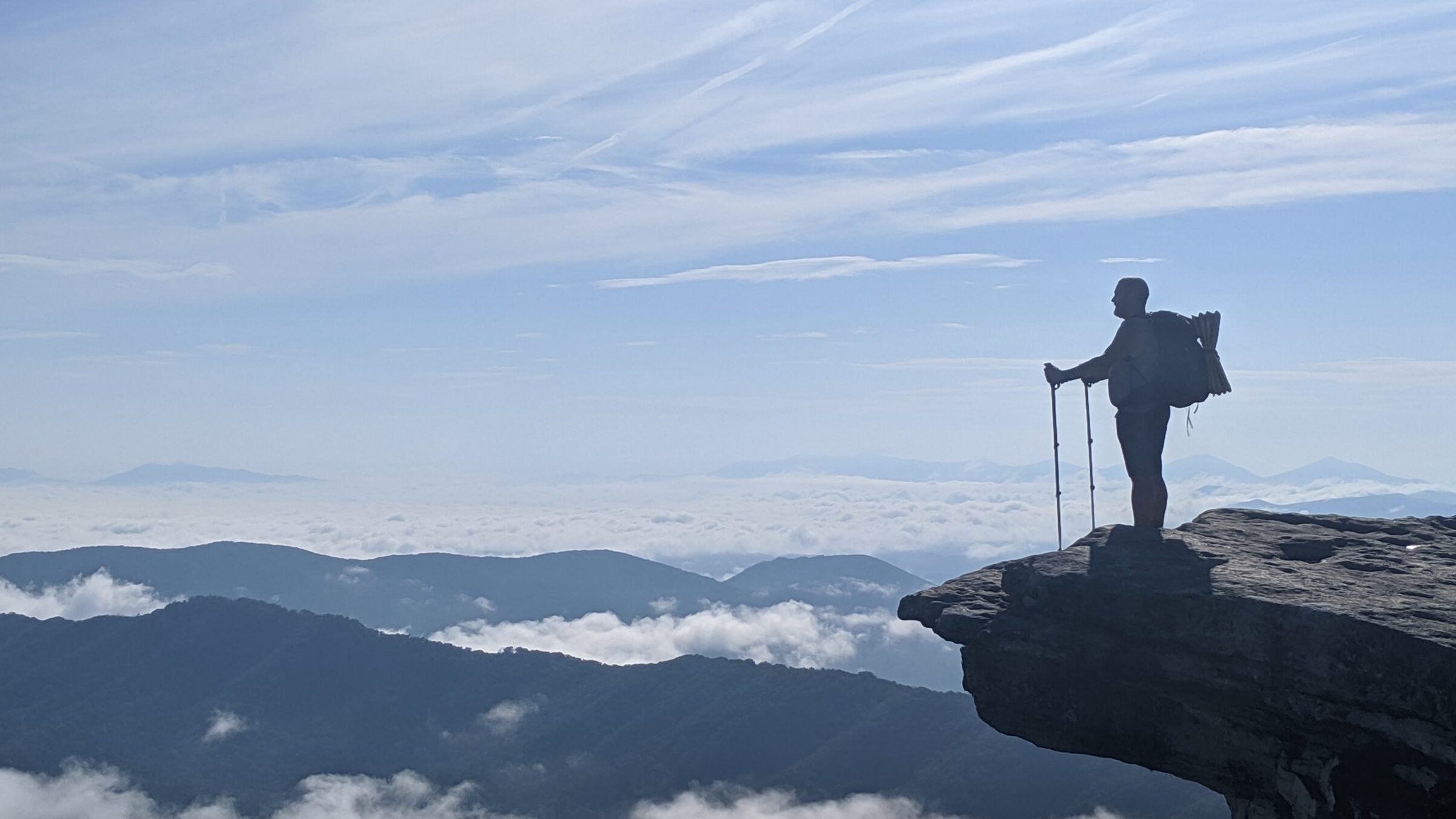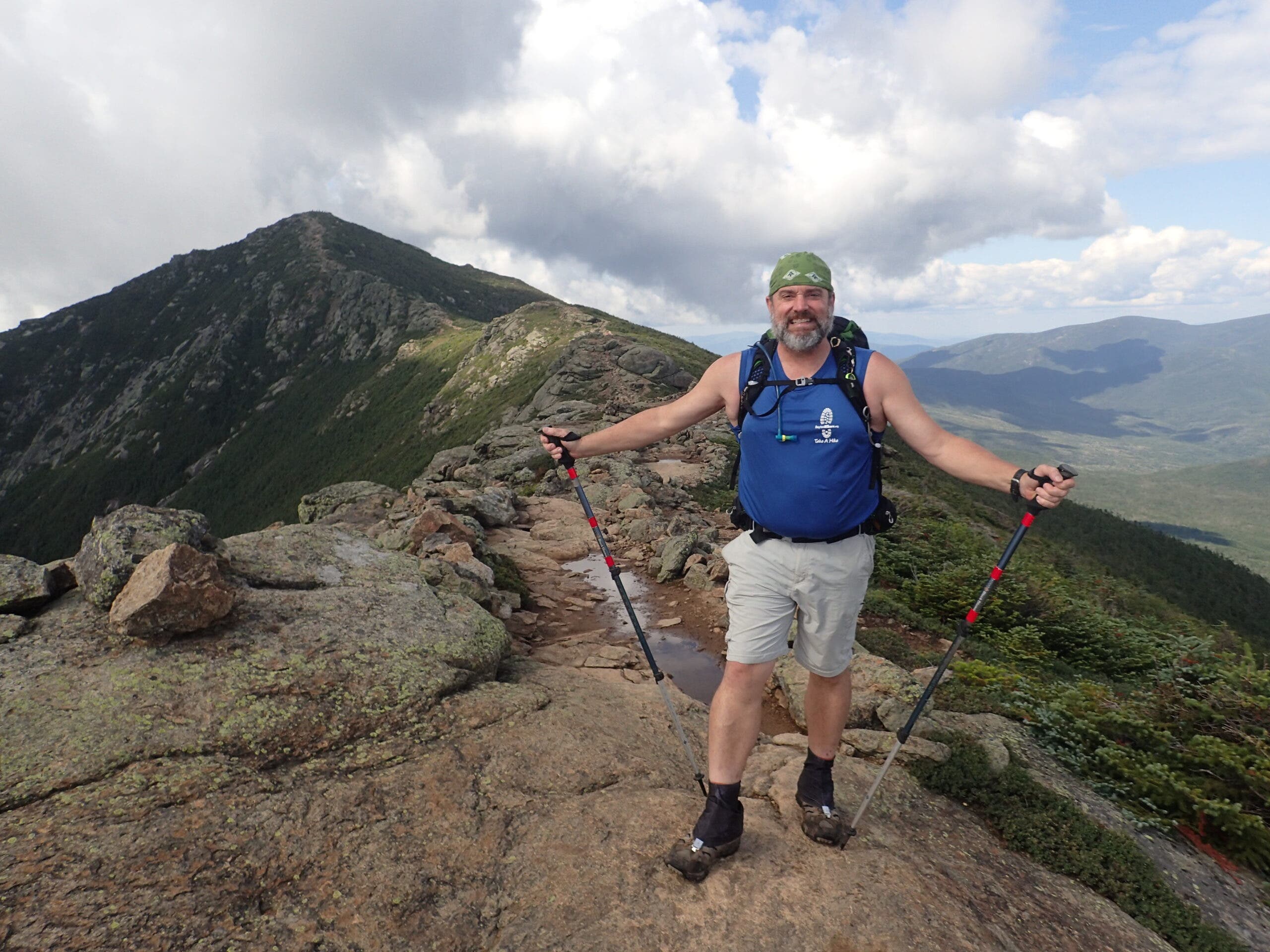Why This 5-Time Appalachian Trail Thru-Hiker Will Never Attempt the PCT

(Photo: Andy Niekamp)
Andy Niekamp, a former IT professional turned long-distance-hiking aficionado, just can’t stay off the trail. As well as hiking the entire AT 5 times, he’s tackled the Florida Trail, Colorado Trail, and Superior Hiking Trail, and the first solo thru-hike of the 1,444-mile Buckeye Trail (about which he wrote a book, Captain Blue on the Blue Blazes). Though most of his personal trips are solo, he runs introductory backpacking trips through his company, Outdoor Adventure Connection, with a focus on gaining skills and confidence while learning how to travel respectfully in the backcountry. We tracked him down between trips to find out why he hikes, what he brings, and why he’s just not interested in the Pacific Crest Trail.
Which long trails have you hiked?
My biggest accomplishment is section hiking the entire Appalachian Trail 5 times, over about 32 years. I estimate it’s about 11,000 miles of hiking, 1,000 days on the trail, or 25 million footsteps. I’ve also thru-hiked Ohio’s Buckeye Trail and the 1,000-mile Florida Trail, plus the Superior Hiking Trail, the Ozark Highlands Trail, the JMT, the Colorado Trail, and Kentucky’s Sheltowee Trace.
What brought you to long trail hiking?
I started when I heard about this thing called the Appalachian Trail in the late 1980s. I decided right then to go to the Great Smoky Mountains and do a 5 day, 35-mile trip. It was a big thing for me at the time, a 35 mile journey solo. I was unprepared, but I quickly learned a lot; I had heavy gear and even canned goods, so it was physically exhausting. After that trip I got home and thought, I could do better. I trained and prepared, and went back the next summer.
What are your most memorable long trail experiences?
I got struck by lightning on the AT in 2015. I was a dummy: I kept going higher on Black Mountain in New York during a thunderstorm, thinking I could outrun it. Partway up lightning struck nearby and traveled through the ground and up my legs. I saw a flash of light, and smelled something burning—I still don’t know what that was. I immediately called 911. The operator didn’t know where I was, so finally I told him I was about an hour from Palisades Parkway and I would hike out and meet the EMTS there. Got my first ambulance ride, but ended up fine.
Another time I was on the Long Trail in Vermont, partway through a thru-hike, when a hiker learned that her mother had died. A fireman had walked up to our camp looking for a girl who was supposed to be there that night. No one knew who she was, but I knew no one comes looking for you on the trail unless the news is dire. I said I could take the note he’d brought—it said she needed to call her aunt—and leave it in the shelter. As I hiked north I figured I might see her and could give her the message, so just in case I kept asking if people had seen her and then eventually I found some hikers that knew her and told me she was almost to our spot on the trail. I waited for her on top of a mountain where I knew there was cell reception, and she called her aunt there and found out her mother had passed away. She needed to get out of there and go to the funeral, and I told her the fastest way to get out was to go back the way she came to the road crossing. I offered to hike out with her, and I carried her pack most of the way. When we reached the road her cousin was there, and she hopped in a car and took off.

What are your biggest lessons from the trail?
I wrote some things down once—the ten things long distance hiking taught me—and they’re similar to what all other hikers tell you.
Persistence is key: It’s something that the trail teaches you, that you can persist, put one step in front of the other, be confident.
A lot of people ask me “why hike the AT five times, haven’t you heard of the PCT?” I tell them that the inner journey is just as important as the outer journey, and the PCT feels like it focuses on the outer journey; a lot of people like to hike it for the scenery, they want the pictures for social media. I’m there for the inner journey, for the persistence and determination I get.
When you do that much hiking, you get comfortable with your inner self. You just have to deal with the issues you have in your life, because you don’t have any distractions.
Bad days happen, but this too shall pass. One of my favorite sayings on the trail is what a difference a day makes. You can get some rest, food, hydration—the trail itself and the scenery can change. When you’re thru-hiking, or section-hiking, never quit on a bad day.
Hiking has taught me to believe in myself. I plunge into these trails, especially the Florida Trail where I was in some remote areas and walking through swamps with alligators and cottonmouths, and I have to say “I believe I can do this.” I have the skills, I just needed to trust myself.
When most non-thru-hikers think about long distance hiking, the fears that come up are things like bears, rattlesnakes, and strange people on the trail. Those aren’t the fears that materialize. I’ve had far more problems with mice than bears. In fact, I’ve seen dozens of bears and not had any real problems. The insects—not the mosquitos and ticks, the little bugs that want to fly in your ears and eyes at the wrong moment—those are the worst.
The people you meet in the backcountry are so kind. There’s an unwritten ethic on long trails: “Be kind to each other.” We aren’t always so kind to each other on social media, or on the road, but out on the trail people will give their last bandaid to you.
There’s a difference between solitude and loneliness. People always think that I’m lonely on the trail because I hike solo. But while loneliness is a negative emotion, solitude is a positive thing to have. Getting away from it all, alone, leads to rejuvenation and inner strength. I’m not going there to be lonely, I’m going there for the solitude. It clears the cobwebs out, helps you be a better person.
You will have to deal with unknowns. If you’re going to hike a long trail you can’t plan everything, though most people tend to want to overplan. I plan the first night and send some resupply boxes. The rest I worry about once I see how far I go. I know I have the skills, and as long as I have a flat spot to camp and some water I’ll be fine. The terrain, or the weather, or your energy level will throw you off course if you overplan. There’s a freedom in no set schedule–I don’t have to be here at a certain time.
One last question: What’s in your pack, and why?
My kit is set up for a variety of trails. My tent is the Big Agnes Fly Creek HV 1. I know a lot of people that like hammocks, but a lot of the time I’m in areas without trees. I’ve slept under picnic shelters, in graveyards, in churchyards. I’m a tent camper, that’s my comfort zone.
My backpack is an Osprey Atmos 58, I”m on like my fourth atmos pack because I love them so much I wear them out. I’ve got a Western Mountaineering 40-degree down sleeping bag, and a Thermarest NeoAir Xtherm Pad. I usually use a trail-runner-style shoe, even on the AT and JMT. I cook on a homemade alcohol stove with an MSR Titan kettle I bought in Virginia in 1995 that I’ve used on every hike since then. It’s the piece of gear that has stuck with me the longest, and been through the most with me.